What scorpions are in Arizona? Thanks to the warm climate, many species of scorpion call Arizona home. Fortunately, most of them are harmless…
Arizona is home to 38 different scorpion species. Its semi-arid climate and sweltering, dry summers make Arizona a perfect breeding destination for scorpions.
In fact, even during winter months, Arizona gets no respite from these creepy critters. During winter, the scorpions venture into homes for a warmer retreat.
However, the good news is that most of the scorpion species found in Arizona are not dangerous to humans. They are so non-venomous, that even after a sting, healthy adults seldom seek medical treatment.
Read on to know some of the most common species of scorpions found in Arizona and how to tell them apart.
1. The Arizona Bark Scorpion
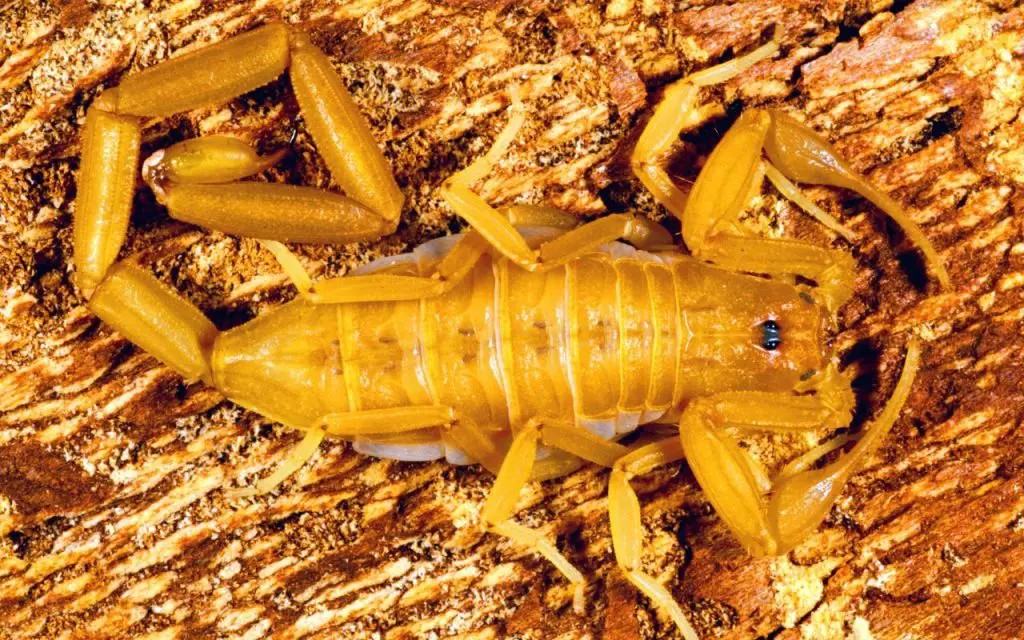
The Arizona Bark Scorpion (Centruroides sculpturatus) is one of the most commonly known scorpions in Arizona. It is also the most venomous scorpion found in North America. Its sting results in painful swelling, along with numbness, muscle spasm, and breathing difficulties, which can last up to 72 hours.
Light brown in color, these nocturnal creatures have adapted themselves to the desert habitat. They hide under rocks and tree barks during the daylight hours and are extremely common in homes during the summer months.
The females give birth to young ones. They carry them on their backs for up to three weeks – until they have their first molt (the process in which they shed their exoskeleton to grow larger).
Though not typically life-threatening, it is important to seek medical attention if you have been stung by an Arizona bark scorpion. As, with timely antivenom administration, the symptoms can resolve within an hour and a half.
The Arizona bark scorpions are closely related to the Baja California bark scorpion (Centruroides exilicauda), which however are not considered dangerous.
Arizona bark scorpion size
These sandy-colored scorpions are common in the Sonoran Desert in the southwestern United States and northwestern Mexico. As compared to other scorpions on our list, the Arizona bark scorpions are pretty petite.
An average male reaches a maximum length that’s slightly above 3 inches (around 3.14 inches). Females, however, are slightly smaller, with a maximum length of 2.75 inches.
Arizona bark scorpions, like all other scorpions, glow under Ultraviolet light. Since these scorpions are night predators and often spend daylight in burrows. UV light flashes help easily detect them even from a significant distance of six feet.
2. The yellow ground scorpion
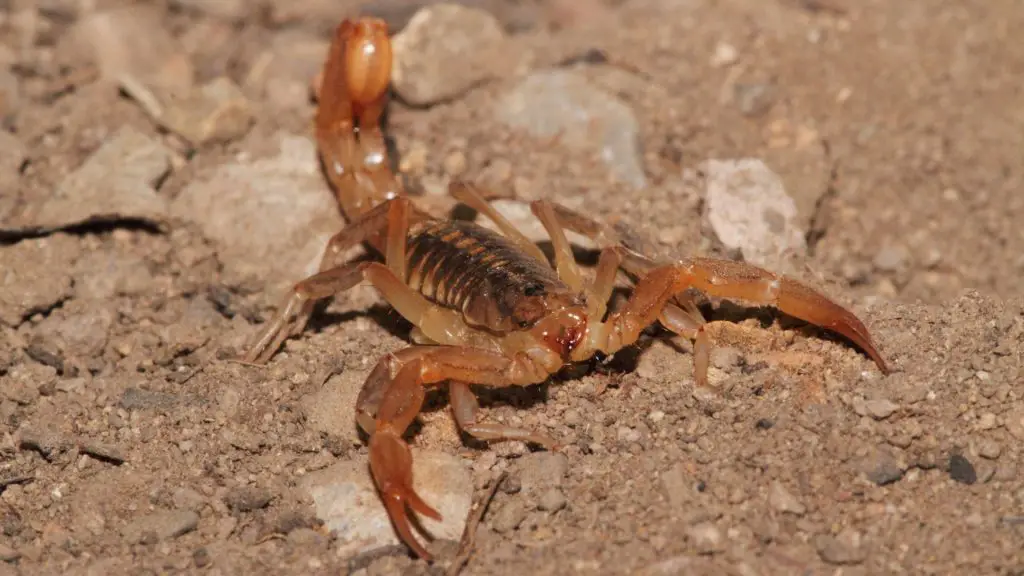
As the name suggests, the yellow ground scorpions (Vaejovis confusus) are yellowish and have a granular body texture. Just like the Arizona bark scorpion, these scorpions have slender hands and fingers due to which they often get confused with each other.
Although the mistaken identity causes much panic among humans, it must be noted that the venom of the yellow ground scorpion is not too dangerous. It causes only a minimal reaction in healthy adults.
Yellow ground scorpion vs bark scorpion
While the yellow ground scorpion closely resembles the bark scorpion, both can be easily distinguished from one another through a close analysis of their tail. In yellow ground scorpion, the first two tail segments are usually wider and not too long.
Arizona Bark Scorpions, on the other hand, have a tiny little bump (known as the “subaculear tooth” under the stinger. The bark scorpions have slender bodies with thinner tails and pincers, as compared to yellow ground scorpions.
3. The Arizona stripetail scorpion
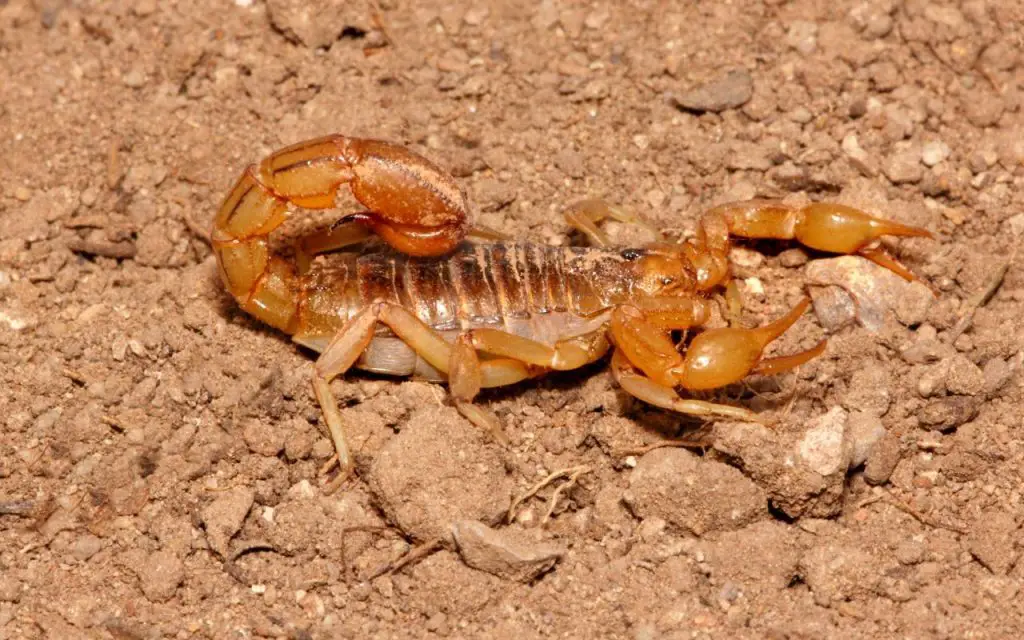
It is one of the most commonly found scorpions in Arizona. Yellowish in color, the Arizona striped-tail scorpions (Vaejovis spinigerus) boast robust and lustrous metasoma and feature dark stripes across their entire dorsal area.
These scorpions are less than three inches long and the females are usually longer than their male counterparts. The striped-tail scorpions mostly inhabit rocks and wood piles, but can even be found inside Arizona homes.
Though these scorpions are venomous, they do not pose a large health risk to healthy individuals. However, small children and the elderly can have allergic reactions.
Immediate pain and swelling after the venomous sting, numbness, tingling in the affected area, and hypersensitivity to touch are often reported. That’s why it is important to seek medical invention if you are stung by the Arizona striped-tail scorpion. Also, call your nearest poison center right away.
Most common scorpion in Arizona
As mentioned above, the Arizona striped-tail scorpions are the most common type of scorpion found in the United States. They inhabit Arizona and many other states including New Mexico, Texas, and California.
These nocturnal creatures can easily be found hiding under rocks and dark places during the day and scouting for food during the night. They feast on all types of vertebrates, including worms, insects, lizards, and more.
4. The Arizona giant hairy desert scorpion
The Arizona giant hairy scorpion (Hadrurus arizonensis) is the largest scorpion in the United States. Distributed throughout the Sonoran and Mojave deserts, these scorpions are found in the western two-thirds of Arizona.
These scorpions attain a length of approximately 14 cm (5.5 in). They have dark top and crab-like sensory pincers that function as sensory feelers.
They have hairy metasomas and are the only species in the United States to have such dense hair coverage.
Their color is also extremely unique. While the appendages are yellow in color, the dorsal area is quite dark.
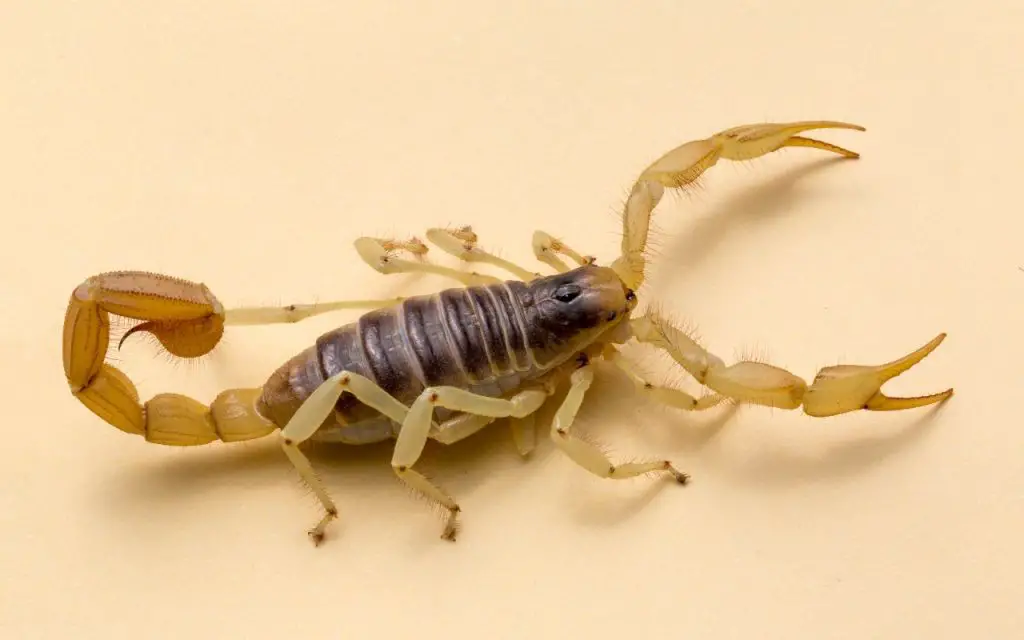
Due to their large size, these nocturnal predators can easily feed on other scorpions as well as large insects, spiders, and small vertebrates.
Toxicity – Even though the giant hairy scorpions are big, they are not venomous enough. Their sting is often perceived to be as painful as the sting of a honeybee and often doesn’t require medical intervention.
However, an allergic reaction to its venom can prove fatal. The symptoms include loss of breath, prolonged pain, and excessive swelling.
Can Arizona scorpions kill you?
Of the 38 species of scorpions found in Arizona, the only scorpion considered deadly to humans is the Arizona bark scorpion. The painful stings, if left untreated, can even turn fatal in young children, unhealthy individuals, the elderly, and people who are allergic to the venom.
Other than that, all other Arizona scorpions pose no serious threat to people, unless you are allergic to insect stings. You may experience localized swelling, severe pain, and numbness in the area but it will subside in some time.
What to do if you are stung by an Arizona Scorpion?
Most scorpion stings are pretty harmless and do not lead to severe symptoms. Victims may not need medical care or attention. However, if you have been stung by the Arizona bark scorpion, prompt medical treatment is extremely important.
Reach out to your nearest emergency department or urgent care for medical assistance. Your doctor may give you an antivenom drug to negate the effect of the sting.
Painkillers may also be administered to relieve pain. Additionally, you may have to undertake some blood work to check the effect of venom on your heart, lungs, liver, and other organs.
At-home Remedies
Follow the below-mentioned suggestions if you, your child, or an elderly has been stung by a less venomous scorpion. These tips can keep the children and elderly safe till medical help is available. Healthy adults may not need further treatment.
- Clean the wound with mild soap and water.
- Apply a cool compress or an ice pack to the affected area. It will help reduce pain and swelling.
- If you are having difficulty breathing or swallowing, restrain yourself from consuming food or liquid.
- Take an OTC (over-the-counter) pain reliever to ease discomfort.
- Get a tetanus shot to prevent infection.
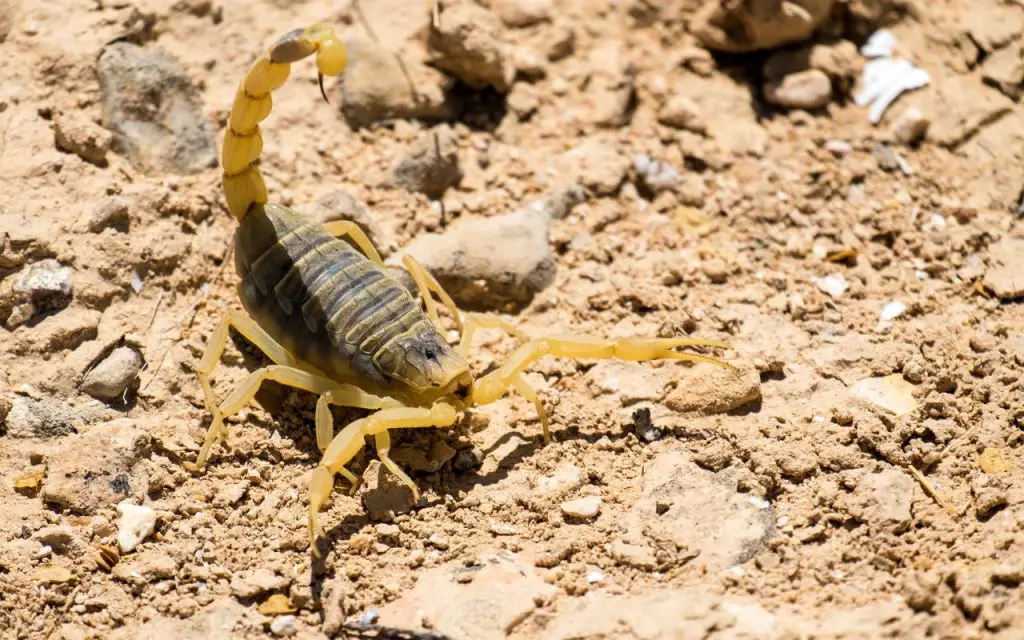
In some regions of the world, like the Middle East where this Deathstalker Scorpion lives, scorpions are a public health concern. Fortunately, deaths them are exceedingly rare in the US.
FAQ relating to
Here’s a list of the top frequently asked questions about Arizona scorpions. Read them and get answers to all your impending questions and queries regarding Arizona scorpions:
Are scorpions in Arizona poisonous?
The short answer is No. Scorpions in Arizona, and around the world, are not poisonous. They all are venomous though. However, in Arizona, bark scorpion stings can cause fatalities in humans.
Rest all the scorpion stings are not fatal for humans.
What are the most common scorpions in Arizona?
Arizona is home to 38 scorpion species. Out of them, the most common scorpions include:
- Arizona Bark scorpion
- Arizona stripe-tailed scorpion
- Arizona giant desert hairy scorpion
- Yellow ground scorpion
- Pseudoscorpion
- Northern scorpion
- Giant whip scorpion
- Tailless whip scorpion
- Southern devil scorpion
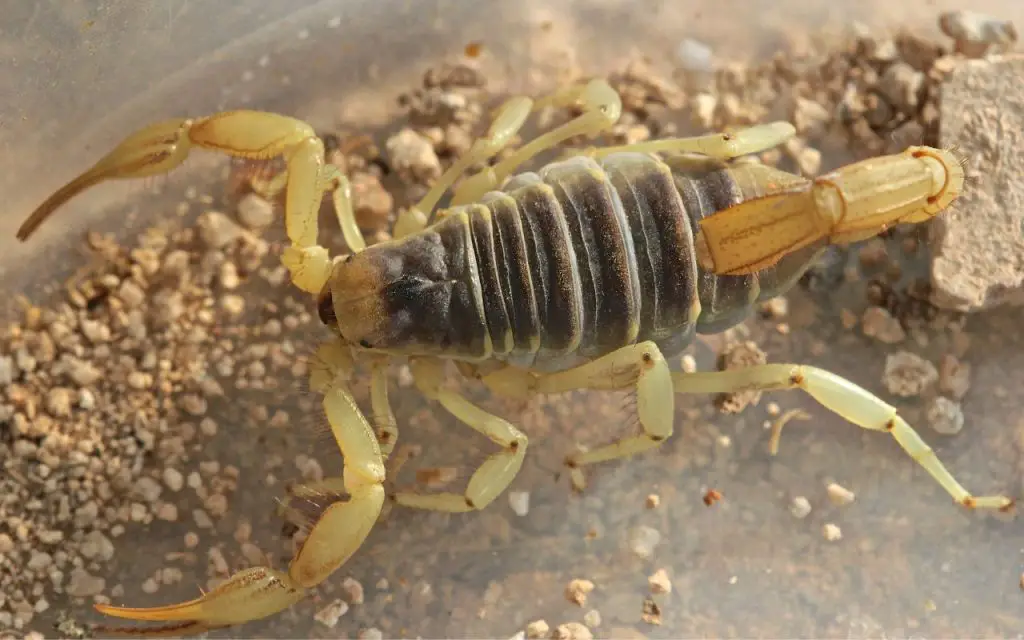
Should I worry about scorpions in Arizona?
Most Arizona scorpions do not pose a serious threat to human life. They have poor eyesight and usually hunt during the night.
However, in people who are allergic to sting, children, and the elderly, Arizona scorpions may cause anaphylaxis. It may also lead to extreme pain and swelling. Caution must always be practiced.
Arizona Bark scorpions are extremely venomous Arizona scorpion species. The sting of the bark scorpion may pose a serious health risk and can even lead to the death of a person.
Tips to keep scorpions away from your home
The best way to protect your home from scorpion infestation is:
- De-clutter your space, especially the backyard, dark spaces, and storage areas.
- Seal your window frames and other openings using a caulk gun.
- Ensure doors and windows are in good repair.
- Keep unscreened doors and windows closed to prevent scorpions from wandering in through them.
- Use black light flashing to spot scorpions in and around your home.
- Use a professional exterminator service to get rid of scorpion infestation in your Arizona home.
What happens if you get stung by a Arizona bark scorpion?
The Arizona bark scorpion is the most venomous scorpion found in Arizona state. Its sting can lead to painful swelling and muscle spasms, along with breathing difficulties.
You must seek immediate medical attention to relieve pain, swelling, and other symptoms.






